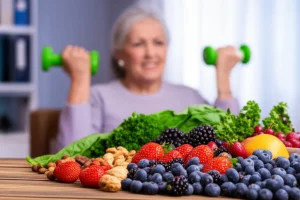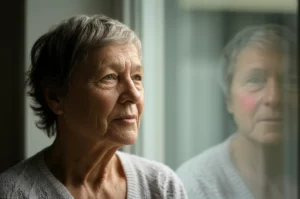Bone Builders: How Exercise Shapes Kids’ Skeletons Differently
Hey there! Let’s chat about something super important for the youngsters in our lives: building strong bones. You know, that window of time during childhood and adolescence is absolutely crucial because that’s when kids build up most of their bone mass – like, 80% of their peak bone mass happens before they hit adulthood! Think of it as laying the foundation for a skyscraper. A strong foundation means a sturdy building later on, right? Maximizing bone mineral density (BMD) now is key to preventing issues like osteoporosis and reducing fracture risks down the road.
We know physical activity (PA) is a huge player in this. It’s one of those things we *can* actually influence, unlike genetics (which also plays a big role, by the way!). High-impact stuff, like jumping or lifting weights (appropriately, of course!), seems to be particularly good for bones. But here’s the thing: exactly *how much* activity is best, and whether that “best dose” is the same for boys and girls, or for different parts of the skeleton, hasn’t always been super clear.
Historically, we often relied on people *telling* us how much they exercised, which, let’s be honest, isn’t always the most accurate. But now, with cool tech like accelerometers (those fancy motion sensors kids wore in this study), we can get a much more objective picture of activity – not just *if* they’re moving, but *how much* (volume) and *how hard* (intensity). This study I’m looking at used data from a big US health survey (NHANES) that had both this objective activity data and detailed bone scans (DXA) for over 2,600 kids and teens aged 8 to 19. Pretty neat, huh? They wanted to dig into those sex- and site-specific differences in how PA dose affects BMD.
Unpacking the Findings: Boys vs. Girls and Different Bones
So, what did they find? Well, it turns out the relationship between physical activity and bone density isn’t a simple one-size-fits-all deal. It really depends on who you are and which bone you’re looking at.
For boys, they saw a pretty straightforward, *linear* connection. Basically, the more they moved (volume) and the harder they moved (intensity), the better their bone density, especially at those weight-bearing spots like the pelvis, arms, and legs. It was like a steady upward climb.
But for girls, things were a bit more nuanced. Instead of a simple linear climb, they found *thresholds*. It was like, up to a certain point of activity, they saw great benefits, but then the gains started to level off or diminish above that point. They found thresholds for both volume (around 15,000 MIMS/day) and intensity (around 49 MIMS/min). Boys also had intensity thresholds (around 45 MIMS/min), with diminishing returns above those values.
Think of it like watering a plant. Giving it some water helps it grow (benefits below the threshold). Giving it more water helps it grow even better (stronger benefits closer to the threshold). But pouring a whole gallon on a small pot might not make it grow *that* much more than a quart did, and might even start to drown it (diminishing returns or stagnation above the threshold). Okay, maybe not drowning for bones, but the *extra* effort doesn’t yield as much *extra* bone gain.

Intensity is King (or Queen!)
One really clear takeaway was that *intensity* seemed to be a stronger driver of bone benefits than just pure *volume*. For both boys and girls, higher intensity activity led to bigger BMD gains compared to just doing more overall movement. The study even calculated that intensity gave about 1.5 to 1.7 times greater benefits than volume for overall bone mass (TBLH BMD).
This makes sense when you think about how bone adapts. It responds best to short bursts of high-magnitude force – like the kind you get from jumping, running fast, or lifting weights. These activities create bigger “strains” on the bone, which signals it to get stronger. Slower, lower-impact activities are great for overall health, but maybe not as potent for building bone density once you hit a certain level.
Different Bones, Different Responses
The study also looked at specific parts of the skeleton. Not surprisingly, the weight-bearing bones – like the legs, arms, and pelvis – showed the strongest links with physical activity. These are the bones that really feel the impact and strain when you’re running, jumping, or lifting.
The spine, on the other hand, showed weaker associations. While the lumbar spine *does* bear weight, the forces are distributed differently compared to the limbs. This highlights that not all physical activity is created equal when it comes to specific bones. Activities that put direct, dynamic load on a bone are going to be the most effective for strengthening *that specific bone*.
Comparing Gains: Boys Tend to Get a Bit More
When they standardized the results to compare apples to apples (or rather, bone density gains per unit of activity increase), the trends suggested that boys generally saw slightly larger BMD gains from physical activity than girls across most skeletal regions. For example, a standard increase in intensity led to a 0.131 SD increase in overall BMD for boys versus 0.106 SD for girls. However, this difference was only statistically significant for the *arm* BMD response to intensity.
Why the difference? The researchers point to potential factors like hormones and behavior. Boys tend to build more muscle mass during puberty (thanks, testosterone!), and stronger muscles can exert greater force on bones, stimulating growth. Plus, boys might be more likely to engage in higher-impact or resistance-based sports compared to girls, who might favor activities that fall below those optimal bone-building thresholds.

What This Means for Us (and the Kids We Care About)
So, what’s the practical takeaway from all this? It really reinforces the idea that physical activity is vital for kids’ bone health, but it also gets a bit more specific. Instead of just saying “be active,” this study suggests we should focus on:
- Prioritizing high-intensity, weight-bearing activities: Think jumping, running, sports with lots of quick movements and impacts (like basketball or dance), and resistance training. These are the activities that seem to give the biggest bang for your buck in terms of bone building.
- Hitting the intensity threshold: The study’s intensity thresholds (around 45-49 MIMS/min) align pretty well with the recommendation for kids to get at least 60 minutes of moderate-to-vigorous physical activity (MVPA) daily. The key seems to be reaching *this level* of intensity, rather than necessarily pushing way beyond it, as the benefits might plateau.
- Tailoring advice, especially for girls: Given the trends suggesting boys might get slightly more benefit per unit of activity, and the identification of specific thresholds for girls, it might be particularly important to encourage girls to engage in high-intensity, weight-bearing activities to maximize their bone gains during this critical time.
This isn’t just about telling kids to run around. It’s about smart strategies. Schools could incorporate more high-impact exercises into PE. Community programs could promote sports that naturally involve bursts of intensity. The goal is to help kids *achieve* those beneficial intensity levels consistently.
A Few Caveats (Because Science Isn’t Always Perfect)
Like any study, this one has its limits. Since it looked at data collected at one point in time (cross-sectional), we can’t definitively say that PA *causes* the higher BMD; it’s a strong association, but causality requires longitudinal studies that track kids over time. Also, while they adjusted for things like diet (calcium and vitamin D), the dietary data wasn’t super detailed. They also didn’t look at sedentary behavior (how much time kids spend sitting), which we know can also affect bone health. And they couldn’t fully account for puberty stages, which significantly impact bone growth and hormone levels.

Looking Ahead
Despite the limitations, this study gives us some fantastic insights. It uses objective data to show us that *how* kids move matters, *where* on their skeleton matters, and that there are interesting differences between boys and girls. It really pushes us towards thinking about more personalized or sex-specific exercise recommendations for optimizing bone health during these crucial growing years.
Future studies tracking kids over time, looking at hormones, genetics, and even how much time they spend sitting, will help paint an even clearer picture. But for now, the message is strong: encourage the kids in your life to get moving, aim for intensity, hit those thresholds, and focus on activities that put healthy stress on their bones. It’s an investment in their long-term health!
Source: Springer







